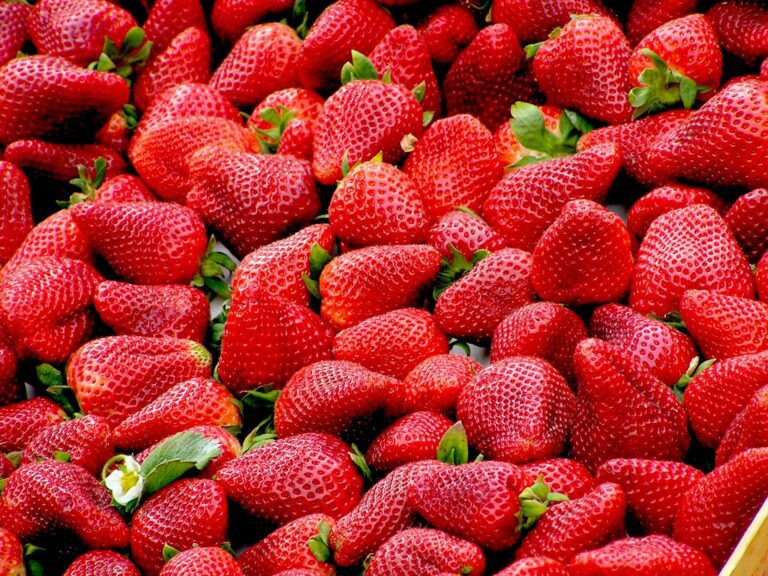Which Fruits Need to Be Frozen for Transport?

Why Some Fruits Need Freezing for Transport
Transporting fruits over long distances presents a unique set of challenges. Fruits are highly perishable, and improper storage can lead to rapid spoilage, loss of nutrients, and financial losses. Freezing is a critical solution that ensures fruits remain fresh, nutritious, and visually appealing when they reach their destination.
The cold chain logistics system plays a significant role in this process. It involves freezing, storing, transporting, and distributing fruits at consistently low temperatures. When done correctly, freezing locks in freshness, preserves texture, and prevents bacterial growth.
Temperature-Sensitive Fruits That Require Freezing
Not all fruits need to be frozen for transport, but some require it to prevent deterioration. Here are the most commonly frozen fruits during shipping:
Berries: Delicate and Perishable
Berries are among the most fragile fruits due to their soft texture and high moisture content. Without freezing, they can develop mold or become mushy within hours. The best candidates for freezing include:
- Strawberries – Prone to bruising and moisture loss
- Blueberries – Retain their shape and texture well when frozen
- Raspberries & Blackberries – Highly perishable, best transported frozen
Tropical Fruits That Benefit from Freezing
Tropical fruits often have a shorter shelf life, making freezing an excellent option for preserving their flavor and nutritional value. Some examples include:
- Mangoes – Retain sweetness and firmness when frozen
- Pineapples – Prevents dehydration and spoilage
- Papayas – Freezing keeps their soft texture intact
Stone Fruits: Freezing for Longevity
Stone fruits have a juicy texture that can turn mushy if not frozen properly. These include:
- Peaches – Best frozen in slices to maintain consistency
- Cherries – Retain firmness and color when frozen
- Apricots – Freezing prevents quick ripening and decay
Grapes: Ideal for Freezing During Transport
Grapes are one of the most commonly frozen fruits for transport. Freezing helps maintain their crunchiness and prevents fermentation, which can occur when exposed to warm temperatures.
Fruits That Do Not Need Freezing for Transport
While freezing is beneficial for many fruits, some can be transported at cool temperatures without the need for freezing. These include:
- Apples – Maintain freshness in cold storage (not freezing)
- Bananas – Freezing affects texture, making them mushy
- Pears – Store well at cool temperatures without freezing
- Melons – Water content makes freezing less effective
How Freezing Affects Fruit Quality
While freezing preserves freshness, it also alters the texture of some fruits. Ice crystals form within the fruit, breaking down cell walls and leading to a softer consistency. However, quick freezing methods such as flash freezing minimize damage and maintain better texture.
Nutritional value remains mostly intact, with minor losses in vitamin C and antioxidants. Proper packaging also prevents freezer burn and moisture loss, keeping fruits in optimal condition.

Best Practices for Transporting Frozen Fruits
Ensuring frozen fruits arrive at their destination in perfect condition requires proper handling. Here are some best practices:
- Use high-quality packaging materials – Vacuum-sealed bags prevent air exposure
- Maintain consistent freezing temperatures – Typically between -18°C to -30°C
- Avoid thawing and refreezing – This affects texture and flavor
- Use insulated containers – Prevents temperature fluctuations during transit
Common Challenges in Transporting Frozen Fruits
Shipping frozen fruits is not without its difficulties. Some common issues include:
- Freezer burn – Occurs due to improper sealing or temperature fluctuations
- Moisture loss – Leads to a dry, unappealing texture
- Delays in transport – Can cause thawing and spoilage
Regulatory Guidelines for Transporting Frozen Fruits
Compliance with food safety standards is essential when transporting frozen fruits. Regulations often include:
- HACCP (Hazard Analysis and Critical Control Points) – Ensuring food safety during transport
- FDA & USDA Guidelines – Monitoring temperature control in cold chain logistics
- International Standards (ISO 22000) – Global food safety practices for frozen fruit shipments
Conclusion
Freezing is an essential technique for transporting perishable fruits across long distances. It prevents spoilage, retains freshness, and ensures that consumers receive high-quality produce. By understanding which fruits require freezing and following best practices in cold chain logistics, businesses can guarantee the safe and efficient delivery of frozen fruits worldwide.
Centrally Located Cold Storage Solutions
Interested in learning about how our cold storage facilities can help your business? Reach out to our team today!

Get in touch with us today to learn more about how Evo Logistics’ climate controlled storage facilities can help your business thrive in the frozen storage logistics industry.
Our team understands the importance of being committed to ensuring the quality of our customer’s product is at its best throughout the shipping process. Our dedicated staff are trained to monitor and operate around the clock 24 hours a day, 365 days a year. With a focus on fast and timely delivery along with GPS tracking, we work to provide consistent satisfaction to our customers.




